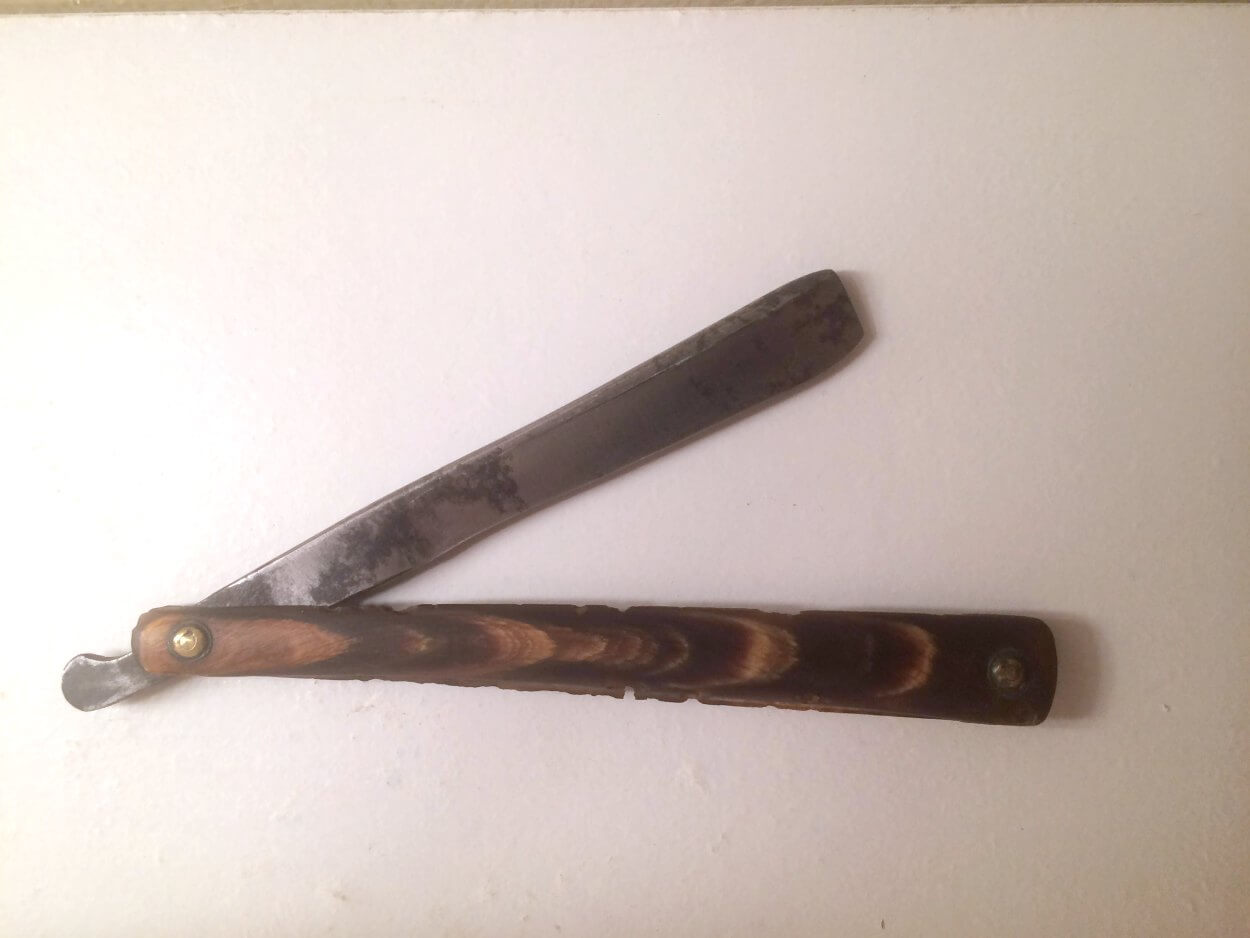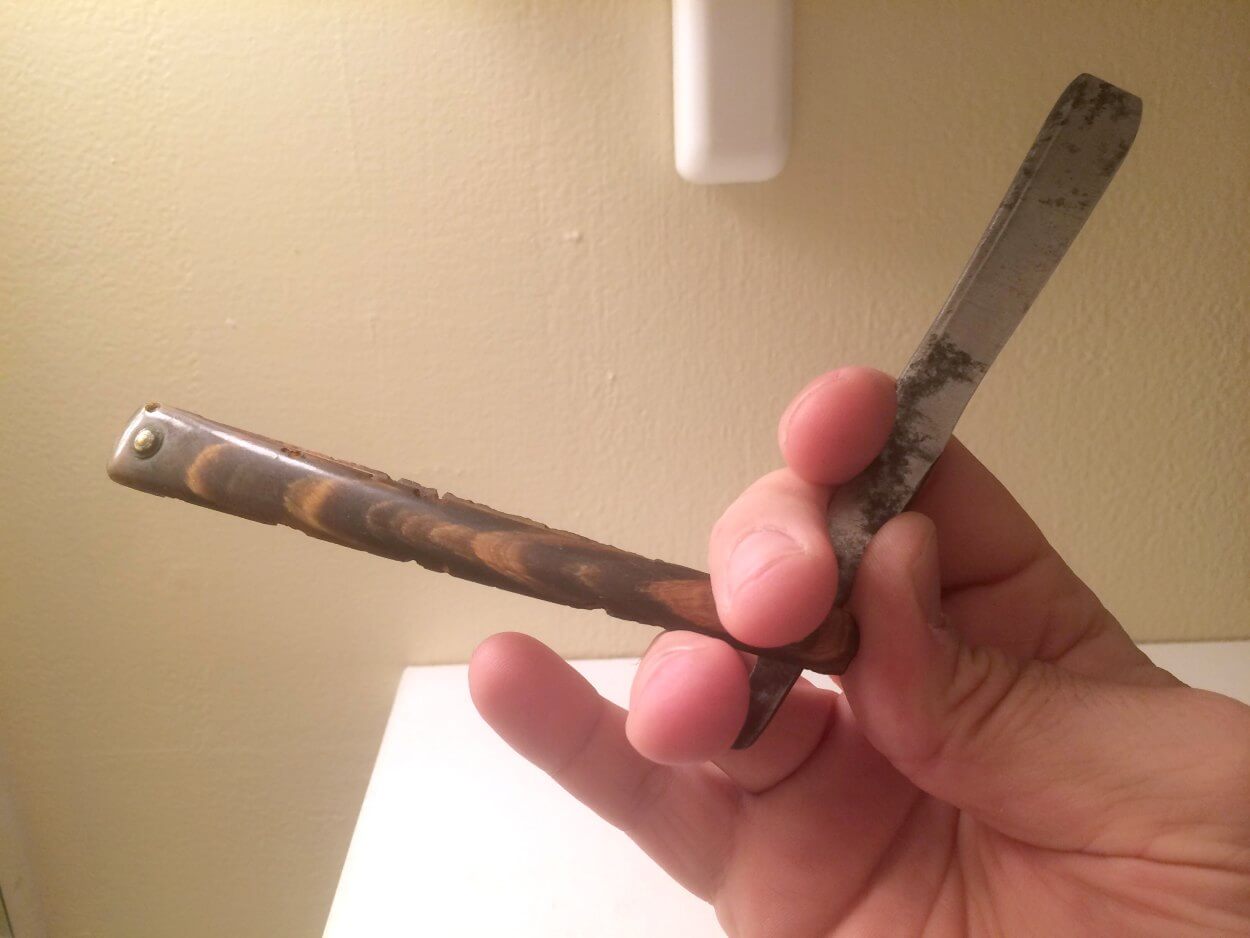
If you’re a fan of traditional wet shaving chances are the history aspect of it intrigues you. Many of our past leaders, sport stars, relatives and heros performed their daily ritual with razors that are cherished today. At the time, these tools were commonly found in drug and department stores and usually were purchased without the intent of collecting. Today, we find ourselves in an endless search to find these artifacts of the past to replicate the routine that was so common years ago.
Unfortunately, there just isn’t a lot of information out there that explains the actual story of the products we painstakingly stalk during online auctions or desperately search for when browsing in antique stores. For some reason a lot of people just didn’t give it a second thought to preserving wet shaving history. And so the quest begins.
For some wet shavers a simple phone call to a grandparent or older relative can answer some of the questions needed to complete the story. Most men owned a safety razor or two in their day and if they didn’t they definitely knew someone who did. I’ve heard some really interesting stories about razors produced in the past 50 years or so and I make it a priority to record these conversations in order to share them with future generations. But what about those older razors that go way back. I’m talking about razors that go back hundreds of years. How does one find out the story?
That question caused many of hours of research for me over the past few years. As a traditional wet shaver I was very interested in how men shaved in past, particularly in the 1700’s. I was determined to find out more.
Last year I composed “The Guide to 18th Century Shaving” which was designed to be a “one stop” for all information regarding wet shaving in the 1700’s. While researching for this page, I learned of a straight razor maker that gained my interest. This maker was only in business for a few years and made some great razors. After several months of searching I finally found my “grail” (favorite) razor.
Needless to say, there was no one I could call or email to find out more information regarding my new find, so I went to internet for more information.
About
William Evatt was born in Castle Donington England. His father Joseph was a basket weaver and his mother Sarah was a homemaker. They had 5 children all of whom were practicing Quakers.
In 1782 William left Castle Donington for Sheffield to begin his apprenticeship with William Wright who was a general cutler. He worked with Wright for several years learning how to make various types of cutlery with razors being a strong focus. After completing his apprenticeship Evatt was free to start his own practice. He officially became a cutler producing razors under his own name in 1791. He took on several apprentices himself over the next 14 years with none of them completing their internship. It’s unknown how many razors he produced, but there are several of them in the hands of collectors today.
Evatt decided to end his tenure as a cutler in 1805 to become a dentist. He was well known in the town of Sheffield both for his dentistry practice and his involvement in local politics. He passed away in 1836. Nevertheless I’m almost positive he never would have thought someone would be writing about his products more than 180 years after his death.
The Razor

The razor in the picture above is an original Evatt 1791-1805. If I had to guess it was made closer to the beginning of his tenure based on the following characteristics:
- The razor lacks a shoulder. Other Evatt razors have a more defined shoulder and the razors are more proportional. They just look better and more modern.
- The term “Warranted” on the tang. From my research (which could still be classified as speculation) the term “Warranted” was placed on razors pre-1800 and the term “cast steel” was engraved on razors post-1800. Evatt produced razors with both of these terms stamped on the tang but I wasn’t able to find out the actual dates.
The scales or handle of the razor are original. They appear to be made of either shell or horn judging by the worm damage and the smell from the “heated pin test” (test performed by taking the sharp edge of a needle, heating it with a flame and pressing it against the scale to see if it smells organic.
The blade is classified as a “full wedge” (blade that has not been hollowed) and is composed of “Warranted” (a type of steel that went through a relatively new production process invented by Benjamin Huntsman in the 1740’s). The relatively small tail and long blade was a common characteristic of razors of this time and were exchanged for shorter blade with a longer tail in the 1800’s.
For the record, I was really impressed with the quality of the blade. The grind of the blade is even, the shape is symmetrical and the weight of the razor is evenly distributed. It goes to show you that fancy machines and computers are not necessary when producing a quality straight razor.
Honing/Stropping
Full wedge blades take a little finesse to say the least. Ask five “honemeisters” (non-official title for those who hone razors for a living) how to hone a wedge and you may receive five different answers.
- For more information of honing straight razors including terms and processes please check out The Guide to Honing Straight Razors Parts 1 and 2.
For this razor I wanted to keep it as traditional as possible. I decided to hone it using a Belgian Coticule which was a very popular stone for the 1700’s. I covered the spine with two layers of electrical tape to create a primary and secondary bevel for the cutting edge.
After I completed the honing process it was time to strop the blade. I used the same process I always use for stropping a straight razor blade and used some extra caution so I wouldn’t damages the scales. It was a little awkward at first but I was able to adapt to the different blade.
Review

This review was the most difficult to write to say the least. I mean, when this razor was made George Washington was President of the United States! Just thinking about the lifestyle of the man who originally owned it really puts it into perspective. There was no electricity, no plumbing or motorized transportation. The USA consisted of around four million people and there were only 13 states. This razor survived the tolls that the last three centuries endured and looks like it will be here for quite some time after.
The Shave
Yes, indeed I did/do shave with this razor. In fact I shave with it quite often and I really enjoy it. I understand that some may feel that this razor may need to be framed or put in a museum but I feel that if it’s a razor it needs to shave!
The actual shave itself was challenging. While it was surprisingly stable and well-balanced, it’s a little difficult to hold. I was very surprised by the overall attention to detail used in the the making of this razor. The cutting edge is straight and the scales were well fastened. This goes to show that even with the lack of technology it was quite possible to produce a well made tool. The larger size of the blade caused the first few passes to be a little awkward. If you’re used to using more modern straights, then you’ll quickly realize that you will need to modify your usual approach.
I quickly found that this razor requires a much slower shaving technique. You will not hear the usual “Ping” you get with modern “hollow ground” straight razors. It’s easy to over compensate pressure to make up for the lack of sound. Doing this will lead to irritation and/or cuts. It’s important to remember that the razor is indeed sharp and does not require extra pressure.
When I used very light pressure and shorter shaving strokes I found the Evatt to perform much better. The longer blade intimidated me at first so I used about half of the blade most of the time. Using a smaller portion of the bald combined with the shorter strokes added extra time to my overall shave. On average it takes me about twice the amount of time it usually takes me to shave with a straight razor.
Holding the razor requires extra attention. Razors of this era have smaller monkey tails (part your ring finger rests when holding) so it takes some getting used to before you’re truly comfortable with it. After a few passes I became more comfortable with the grip, but I will admit I still prefer the hold of modern straights.
Here is a video of myself using the razor!
https://www.youtube.com/watch?v=OD4rfYM26NY&t=251s
Conclusion
Ok, so this razor may not be the best performing straight razor in my collection, but I can tell you it is my favorite. It still provides a great shave 225 years after it was made and is a historic piece of wet shaving history. Using it almost makes me feel like an insignificant piece of matter in this universe as this razor was here for many years before me and most likely will be here many years after.
For more information regarding 18th century shaving please check out The Guide to 18th Century Shaving.
About the Author:
Joe Borrelli is a long-time wet shaving enthusiast and collector. He hosts the Wet Shaving News/Talk Podcast , runs his own self-funded website http://shavestraightandsafe.com/ and operates a YouTube channel to help inform the community of new information involving the wet shaving world. Joe holds a BBA from Florida Atlantic University, and currently works for the nation’s largest wine/spirits/beer retailer. In his spare time, he enjoys traveling with his wife Linda, reading, writing, outdoor activities and collecting wet shaving apparel. Find out more about Joe here.
This post was imported into WordPress in one click using Wordable

Interesting but boring
Comments are closed.